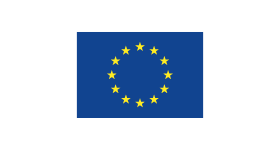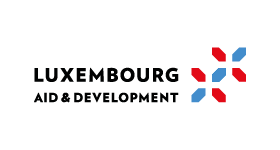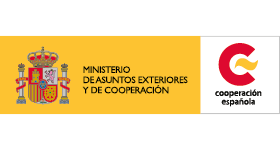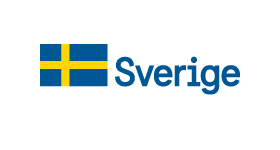Country Profile Dashboard
RemitSCOPE Africa’s interactive dashboards allow you to explore, analyse and compare indicators across countries. The dashboards are organized into 5 themes, offering the most up to date and comprehensive compilation of relevant data, and cover the 54 countries in Africa.
140+
5
regular data updates
54
5
ability download data
About the Remittances Dashboard
The Remittances Dashboard displays data broken down according to remittance inflows and outflows and at a country and corridor level (where available). The dashboard has remittance data published by the World Bank and data published by Central Banks were available. RemitSCOPE collects and displays the first ever compilation of remittance flow data published by Central Banks at a country and corridor-level. This data will continue to be updated as it becomes available.
Other indicators on the dashboard include the compound annual growth rate of remittances over 3 years and an indication of how important remittances are to the receive country’s economy (GDP). Data on household dependency on remittances, whilst insightful, is currently weak across the continent and is collected mainly through surveys. Some of this data is quite outdated.
RemitSCOPE collects and publishes data on informal remittances. This data, due to the nature of these flows, is very weak and is usually collected through surveys or estimates. RemitSCOPE aims to share what data is available, although please note that the dates of the data and quality of the data vary considerably. Hover over the indicator in the map to see additional information on the source of the data.
There is currently a drive to improve the quality and availability of remittance data globally as part of the International Working Group to Improve Data on Remittance Flows under the auspices of KNOMAD. In the future RemitSCOPE will aim to provide further insight into the data collection methodology and which components are included in the data (e.g., cash / in-kind and remittances sent through informal channels).
Further information:
https://www.migrationdataportal.org/themes/remittances
About the Migration & Diaspora Dashboard
Remittances are sent by diaspora. Diasporas are defined as individuals and members of networks, associations and communities, who have left their country of origin, but maintain links with their homelands (European Commission).
Currently there is no global dataset providing data on the size and whereabouts of a country’s diaspora. Currently the best dataset available is UNDESA which publishes international migrant stock data every 5 years. The World Bank publishes an annual bilateral matrix on international migrant stock based on the data published by UNDESA.
International migrant stock data are estimates by age, sex, destination, and origin for the mid-point of each year. Most of the data used to estimate the international migrant stock were obtained from censuses, population registers and nationally representative surveys and have been based on foreign born population. Persons who were born abroad and who naturalized in their country of residence are excluded from the stock of international migrants when using citizenship as the criterion to define international migrants. The coverage of refugees in population censuses is uneven. Migrant stock data is therefore likely to be an underestimation of the true size of a country’s diaspora.
Migrant stock data from UNDESA is provided at a country and corridor level on the Dashboards, for both emigrant stock (e.g. Ghanaians living in Europe) and immigrant stock (e.g. Europeans living in Ghana).
About the Remittance Pricing Dashboard
Remittance pricing is often non-transparent to the consumer as it includes a fee and a (frequently hidden) margin on the foreign exchange. This is the margin made by the operator on the difference between the foreign exchange rate offered on a currency conversion and the mid-market spot rate. Many regulators require remittance service providers to be transparent about their fees and rates upfront before a transaction.
To address typically high remittance pricing, the UN’s Sustainable Development Goal 10.c aims to reduce the total (fee + foreign exchange margin) average cost of sending remittances globally to 3% of the send amount and for no corridor to be more than 5% of the send amount by 2030.
The World Bank, in Remittance Prices Worldwide (RPW), collects mystery shopping data quarterly on the cost of sending USD200 and USD500 equivalent in over 367 corridors globally. It captures the largest remittance corridors globally and the main operators in each corridor. RPW pricing is used to track progress against the SDG target. RemitSCOPE compiles data from RPW and data collected, using the same or a similar methodology, by PRIME Africa and by GSMA.
RemitSCOPE uses these data sources to create a series of its own indicators. These include inbound and outbound remittance pricing to Africa at a country and corridor level and over-time and costs broken down by the type of service provider (bank and non-bank) and according to the channel used (cash-to-cash, one-leg digital (e.g. one-leg with the option for cash and one-leg of the transaction only digital), digital only and mobile-mobile services by mobile network operators (MNOs).
Further information:
https://remittanceprices.worldbank.org
About the Digitisation & Access Dashboard
The Digitisation & Access Dashboard explores three aspects of digitisation and is split across three sub-dashboards:
(1) financial inclusion,
(2) mobile money,
(3) digital payment system and infrastructure.
Digitization of international remittances can reduce barriers to entry, increase competition, improve accessibility to the user, and reduce operational costs. Typically, remittances have been sent using cash-to-cash services which rely on a physical agent network to cash-in and cash-out the remittances. As countries improve their digital payment systems and ecosystem and the financial inclusion of the population increases, people can swap to digital remittance services and remove the need and associated cost of agents. Sending and receiving remittances is often the first interaction that people have with formal financial services and therefore can be a catalyst to drive financial inclusion.
In Africa, where digital payment systems have often been underdeveloped, mobile money wallets offered by mobile network operators (MNOs) have played a leading role in offering financial services where banks have not. The GSMA tracks the cost of sending low-value payments money using mobile wallet-to-mobile wallet services.
The Financial Inclusion dashboard shares high-level indicators from the FINDEX survey on account-ownership, use of mobile money and use of digital payments across the continent broken down by gender. The Mobile Money dashboard shares the latest data on mobile money indicating where there are mobile money deployments, mobile money account ownership, information on cross-border remittance services offered by MNOs (collected by GSMA) and a comparison on mobile-to-mobile cross-border remittance pricing. The digital infrastructure and access to services provides further background information into the infrastructure to support digitisation. For example, this dashboard provides indicators on access to electricity and internet in the country, an indication of whether there is mobile money interoperability and indicators based on the IMF’s Financial Access Survey on potential access points.
About the Operating Environment Dashboard
The Operating Environment Dashboard is divided into:
(1) Market considerations for operators
(2) Licensing & regulatory environment
A country’s operating, regulatory and compliance environment dictates the type of entities that are permitted to offer remittance services and the rules for operating. There are some conditions that make operating a remittance business more challenging which have been clustered together in the Market Considerations Dashboard. This is not an exhaustive list, but draws together some insightful indicators that stakeholders should consider about a country’s remittance market. For example, whether there are foreign exchange controls and limits on who is permitted to operate, countries on the FATF watchlist that may affect de-risking, those with significant parallel markets and so on. Please see the ‘Read more about indicators’ to see the rationale behind each indicator.
Most of the information displayed in the Operating Environment Dashboard is not currently available in any systematic way or held on a global database. To fill this gap, this information has been gathered by RemitSCOPE Researchers. Information is provided to the best of the Researchers knowledge and, where available, sources are provided. Please use the option at the side of the page to contact us about data updates, errors or changes.
For information on the market structure and an understanding on the different types of services that are able to pay-out and send-remittances please visit the Country Profiles. There is currently no data available on remittance market operators at a country or corridor level and no market share data.
Demo text for “partners?” tab… Ut enim ad minim veniam, quis nostrud exercitation ullamco laboris nisi ut aliquip ex ea commodo consequat. Duis aute irure dolor in reprehenderit in voluptate velit esse cillum dolore eu fugiat nulla pariatur. Excepteur sint occaecat cupidatat non proident, sunt in culpa qui officia deserunt mollit anim id est laborum.





